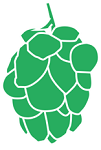The 4 Magic Ingredients of Beer: Water, Malts, Hops & Yeast
2nd Mar 2016

Did you know that beer is made from just four ingredients? Water, hops, yeast and malts. Each plays a significant role in its creation; you can’t have beer without the contribution of these crucial ingredients.

If Jesus was a brewer he would literally turn water into beer. Water, with the combination of the other ingredients morphs into the beers we all love. Interestingly, water in every location throughout the world has a different mineral content; Dublin is great for making stouts such as Guinness, while the waters of Pilsen in the Czech Republic are perfect for making pilsners. These days the practice of mineral analysis, the addition of minerals including Carbonate, Sodium, Chloride, Sulfate, Calcium and Magnesium means that no longer do you need to go to each specific location to make the brew. The type of water that best makes each style can now be easily recreated anywhere.

Malts
Malts like hops are a multi-faceted ingredient. They give the beer its colour, contribute to the beer’s flavour and also provide the fuel in the form of fermentable sugars for the yeast to turn water into beer. There are a wide range of malt colours which explains why the colour of beer can vary significantly, from a very light gold hue to almost jet black in colour. Similarly the flavour of the malts can vary strongly, with the lightest of malts contributing little in the way of flavour, through to roasted malts which can deliver chocolate and coffee flavours.

Used to give beer its flavour, aroma and bitterness. Hops are the female flower, grown from hop vines. They are added to the brewing process at different stages depending on the objective. Typically you will find multiple varieties of hops are added to the brew as they have different qualities that deliver on the flavour, aroma and bitterness components. In the past 10 years there has been a massive increase in the varieties of hops available. This has been driven largely by the changing consumer tastes, particularly in the USA, where consumers are seeking highly aromatic, flavourful hops with profiles of pine, grass and various fruits. One such hop is the Australian grown Galaxy which is used in the hugely popular Stone & Wood Pacific Ale. If you are interested in getting an understanding of individual hops then check out single hop beers. These are brews that use one variety of hops exclusively in the brewing process (rather than different hops for flavour, aroma and bitterness).
If there was a God particle in beer then this would be it. This was the one component of beer that before the science of beer was understood was an absolute mystery to brewers. In early brewing days the Norwegian Vikings thought that a ‘lucky stick’ that was used in previous brews helped to make beer. What they didn’t understand was that it was the wild yeasts that were attached to this stick that were making the magic happen. In simple terms yeast eats the fermentable sugars in the form of malts in beer and burps out a combination of CO2 (carbonation), alcohol as well as different flavour compounds. Yeast strains are varied the world over, with a large number of breweries having proprietary in house yeast strains which they cultivate and add to their brews. While the yeast used for most beers does not add significant flavour cues, this does vary, with Belgian Pale Ales in particular having a much greater yeast driven flavour profile. As breweries experiment more and more with creating different yeasts there will be more beers that come onto the market that are have a yeast driven flavour profile.
So there you are, four simple ingredients that are hugely complex and contribute significantly to creating great beer.

 Loading... Please wait...
Loading... Please wait...



